Higher education in USA for international students
- Education information
- Types of Preparatory Programs in the USA
- What Do Preparatory Programs Offer?
- Why Choose US Higher Education?
- Navigating the Landscape of Higher Education in America
- Bachelor's and Master's Degrees in the USA
- Admissions Process for Higher Education in the USA
- Tuition Fees for Higher Education in the USA
- Top U.S. Universities
- Literature and references
This content was developed with active participation of Qiuhua Liang.
In the process of preparing the material, we referenced the following sources:
- https://ivyleague.com/
- https://www.usa.gov/study-in-US.
-
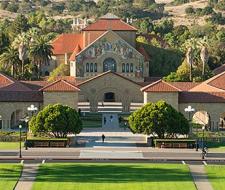 from 53000.00 $ / yearApply with documents
from 53000.00 $ / yearApply with documents -
 #2 among U.S. national universities
#2 among U.S. national universities USABoston, MassachusettsCurrently watching: 9Apply with documents
USABoston, MassachusettsCurrently watching: 9Apply with documents -
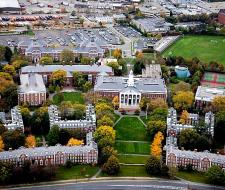 from 28000.00 $ / semesterApply with documents
from 28000.00 $ / semesterApply with documents -
 from 27000.00 $ / semesterApply with documents
from 27000.00 $ / semesterApply with documents -
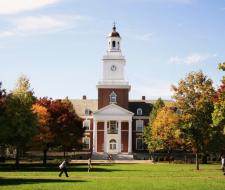 from 41320.00 $ / yearApply with documents
from 41320.00 $ / yearApply with documents -
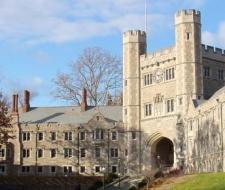 from 51870.00 $ / yearApply with documents
from 51870.00 $ / yearApply with documents -
 from 12500.00 $ / semesterApply with documents
from 12500.00 $ / semesterApply with documents -
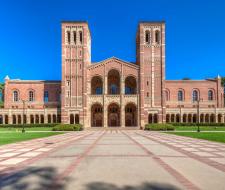 #15 out of 439 National Universities
#15 out of 439 National Universities USALos Angeles, CaliforniaCurrently watching: 7from 29754.00 $ / yearApply with documents
USALos Angeles, CaliforniaCurrently watching: 7from 29754.00 $ / yearApply with documents -
 #15 out of 439 National Universities
#15 out of 439 National Universities USASan Francisco, CaliforniaCurrently watching: 8from 28000.00 $ / yearApply with documents
USASan Francisco, CaliforniaCurrently watching: 8from 28000.00 $ / yearApply with documents -
 #6 out of 240 US and international art and design colleges
#6 out of 240 US and international art and design colleges USANew YorkCurrently watching: 10from 27955.00 $ / yearApply with documents
USANew YorkCurrently watching: 10from 27955.00 $ / yearApply with documents
Alternative destinations
Education information
Nowadays, the USA is the leading country among foreign students wishing to get high quality and advanced education. SMAPSE offers more than 100 of the best US universities that provide a great deal of courses and studying programs available for international students. The opportunity to obtain higher education in America is provided to everyone who is ready to invest in their own future - universities are open to students from all over the world.
Higher education, like secondary education in the United States, has several distinctive features that attract international students:
-
Top-quality US education:
-
75% of modern Nobel laureates, practicing scientists and businessmen teach in US universities;
-
78 American universities are among the world's TOP (***is there a number missing here?).
-
-
Social, legal protection of foreign students;
-
High-quality medical care;
-
Comfortable accommodation conditions.
One of the main advantages of the system of higher education in the USA, which is noted by all applicants, is a variety of opportunities: in addition to academic preparation, students get optimal conditions for creative and physical development, campuses have everything necessary for effective studies and pleasant rest. In addition, studying in the USA allows foreign students:
-
Adapt to life in the country;
-
Get acquainted with the local culture and traditions;
-
Optimal conditions for creative, physical development;
-
Campuses have all the necessary infrastructure.
Actually, a foreign student will need help in planning for admission to a US university. It's important to examine transitional studying programs. It's recommended to pay much attention to the choice of the preparatory pre-university programs, since American universities have different requirements for the admission of foreign students.
Types of Preparatory Programs in the USA
In the United States, preparatory programs for higher education are offered in two main categories:
-
University-Provided Programs: Developed by university faculty, these programs are tailored to meet the specific requirements of higher education in America. This presents an excellent opportunity for prospective students to familiarize themselves with the university structure and gain essential knowledge before official admission.
-
National Pre-University Centers: These programs are versatile and offer flexibility in choosing any higher education institutions in the USA after completion.
Both types offer the following mandatory components:
-
SAT exam preparation
-
English language courses
-
Cultural adaptation programs


What advice do you have for those students who want to enter the top universities in the United States and have 3-4 years to prepare?
Oh, this is a great time to competently assess your capabilities and consider the available options! There is much that can be done, but there are two main factors: assessments and English. Yes, some universities here will not be particularly demanding, but understand that good English will improve your mastery of the material in principle, and high marks will help you win a scholarship or go to college with honors.
What Do Preparatory Programs Offer?
The preparatory programs serve multiple purposes, such as:
-
Campus Accommodation: International students typically have the option of staying on campus.
-
Extracurricular Activities: Programs often include a variety of student activities for a more enriching experience.
-
Cultural Orientation: Knowledge about American traditions and student life is also shared to help international students adapt.
Advantages of National Pre-University Centers
National centers are particularly advantageous because they actively assist students in logistical aspects. Their services often include legal advice for visa issues, housing support, and help in selecting the most suitable universities in the USA.

Preparing for the SAT
The SAT is an essential part of higher education admissions in the USA. Many students begin their preparation years in advance. A high SAT score usually requires excellent knowledge in:
-
Mathematics
-
Three specialized subjects
-
English grammar and vocabulary
Cultural Adaptation Program
This part of the program helps students acclimate to the American cultural environment and fosters skills for independent organization and motivation for self-study.

The preparatory programs serve multiple purposes, such as:
-
Campus Accommodation: International students typically have the option of staying on campus.
-
Extracurricular Activities: Programs often include a variety of student activities for a more enriching experience.
-
Cultural Orientation: Knowledge about American traditions and student life is also shared to help international students adapt.
Overview of Higher Education Institutions in the USA
There are over 4,000 higher education institutions in the USA, including both colleges and universities. These institutions provide top-quality education, modern laboratories, and extensive sports facilities. Depending on your educational goals, you can opt for a Bachelor's, Master's, or even a Ph.D. program.
Categories of Higher Education Institutions in the USA
-
Public Universities: These are generally larger and offer lower tuition fees. Notable examples include the University of Michigan and the University of California at Berkeley.
-
Private Universities: These are often smaller but boast a more developed infrastructure and greater opportunities for research. Ivy League schools like Princeton and Harvard fall under this category.
Cost of Higher Education in the USA
The cost varies widely between public and private institutions. Public universities often offer lower tuition fees, especially for residents of the home state. On the other hand, tuition at private universities can range from $30,000 to $60,000 per academic year, not including accommodation and additional expenses.
How to get Higher Education in the USA
Foreign students can enter U.S. universities in several ways:
-
Complete a pre-university program after high school
-
Transfer from a university in their home country
-
Enroll in a Master's or Doctoral program after completing higher education in their home country
Each pathway comes with its own set of courses, requirements, rules, and documentation. Therefore, selecting the appropriate program can save both time and money for prospective international students.
By understanding these various aspects, you can better navigate the landscape of higher education in the USA, whether you're looking at preparatory programs or diving straight into a degree.

Higher Education Programs in the USA for International Students
International Baccalaureate (IB): A Global Educational Passport
The International Baccalaureate (IB) is a two-year program that offers intensive coursework across six subjects. Completion of the IB program not only opens doors to universities in the USA but also to other elite institutions worldwide. Designed specifically for international students, the application process requires:
-
A secondary school graduation certificate with strong academic performance
-
An IELTS score of at least 5.5, or a TOEFL score of 40-45 points
Pre-Masters or Pre-MBA Program: Stepping Stones to Advanced Degrees
For those who aim to pursue a Master's or Doctorate program in the USA, the Pre-Masters and Pre-MBA courses serve as excellent preparatory steps. Admittance prerequisites include:
-
A Bachelor's degree
-
An IELTS score of 6.0 or a TOEFL score of 550 PBT / 213 CBT / 81 IBT
These programs last between 6 to 9 months, depending on the student's English proficiency. Note that at least two years of managerial work experience is necessary for Pre-MBA program admission.
Why Choose US Higher Education?
Universities in the USA are renowned for their commitment to high-quality education, supported by top-tier faculty and cutting-edge technology. The cost of US higher education can be substantial, but the investment often yields high returns such as:
-
A prestigious degree recognized worldwide
-
Acquiring sought-after skills and professions
-
Building a strong foundation for a rewarding career
Making Informed Choices About Higher Education Institutions in the USA
While it's tempting to aim for household names like Harvard or Yale, these schools require significant preparation and may not be the most practical choice. Many other high-quality educational institutions in the USA offer excellent education at a more affordable cost.
Entrance exams are usually not needed for admission to higher education programs in the USA; a satisfactory SAT score is generally sufficient. A Bachelor's degree can typically be earned after four years of study, with each subject course lasting one semester.

Flexibility and Specialization in American Higher Education
One of the unique features of higher education in America is the flexibility it offers. Students can tailor their educational journey according to their interests and career goals, combining subjects as varied as engineering and theater or finance and journalism. Those seeking a second degree or specialized focus will find a wide array of options.
Pursuing Business Education in the USA
MBA programs are particularly popular among international students due to the career opportunities they provide. Despite the high fees associated with these programs, the investment is often justified by a substantial salary increase, which can range from 10-30% for graduates from top business schools.
By understanding the various academic pathways and the cost of higher education in the USA, prospective students can make more informed decisions to fulfill their educational and career aspirations.
Navigating the Landscape of Higher Education in America
Categories of Higher Education Institutions in the USA
US higher education offers international students an array of specializations across various academic disciplines. Broadly speaking, the American system comprises four types of educational establishments:
-
Universities in the USA: These large institutions are made up of several colleges or faculties that offer undergraduate, graduate, and doctoral degrees.
-
Four-year Colleges: Primarily designed for Bachelor's degree programs, these institutions also cater to international students and provide a four-year educational track similar to universities.
-
Technical Schools: These offer a wide array of programs lasting anywhere from six months to four years, focusing on specific vocational or technical skills.
-
Community Colleges: Offering two-year programs, these institutions prepare students for the workforce or for transfer to a four-year college to complete a Bachelor's degree.
Most Competitive and High-Paying Fields
Certain fields of study attract more attention and competition due to their prestige and earning potential. These include:
-
Law
-
Information Technology
-
Medicine
-
Music Education
-
Business and Finance
Academic Year and Assessment
Like most countries, the academic year in the USA typically begins in late August or early September and concludes in late May or early June. However, the structure can vary, with some institutions following trimesters or even quarters.
Assessment in higher education institutions in the USA is unique. Students must accumulate a specified number of educational points, known as credits, to complete their course or earn their degree. It's important to note that each university sets its own credit standards. Grading is usually done on a letter scale, which is then converted into a Grade Point Average (GPA). This GPA becomes a crucial indicator for employers and graduate school admissions.
Bachelor's and Master's Degrees in the USA
Higher education in the USA allows international students to pursue multiple academic degrees in a structured manner.
-
Bachelor's Degree: Typically taking four years to complete, a Bachelor's program includes around 30 subjects aligned with the student's chosen specialization. Graduates earn either a Bachelor of Science or a Bachelor of Arts degree, making them fully qualified for various professional roles.
-
Master's Degree: This advanced academic level lasts generally for two years and involves:
-
Specialization
-
In-depth study of selected subjects
-
The program culminates in the defense of a master's thesis. Students can focus either on professional roles or on academic research and postgraduate studies.
The Path to a PhD
For those interested in even higher levels of academic achievement, a Doctor of Philosophy (PhD) is the pinnacle. This degree involves comprehensive research and can take 4 to 6 years to complete. It's worth noting that the term "Philosophy" here is historically rooted and can apply to any academic specialization.

Flexibility in Curriculum Choices
Many Bachelor's programs allow students to explore a wide range of subjects in their first two years, only specifying their major (primary field of study) and minor (secondary field of study) in the third year. This allows for a diverse educational experience, letting students dabble in:
-
Arts
-
Journalism
-
Computer Science
-
Business Management, etc.
By considering the various academic paths and understanding the cost of higher education in the USA, international students can make well-informed decisions that align with their academic and career goals.
Admissions Process for Higher Education in the USA
Required Documents for Admission to Universities in the USA
Applying to higher education institutions in the USA involves submitting several essential documents, especially for international students. Here's what you'll generally need:
-
Application Form: Submitted either online or through email to the university’s Graduate Admissions Office.
-
Statement of Purpose: A detailed essay answering the question, "Why am I worthy to study at this university?"
-
Payment Receipt: Proof of payment for the non-refundable registration fee, typically ranging from $90 to $150 USD.
-
Academic Records: School certificate or transcripts, especially if you've partially completed higher education in your home country.
-
Language Proficiency Certificate: Usually a TOEFL or IELTS score is required.
-
Standardized Test Scores: Some universities may require SAT or ACT scores.
-
Previous Degrees: If applying for a Master's program, a Bachelor’s degree and associated transcripts are mandatory.
-
Letters of Recommendation: These can come from teachers, employers, or other notable references.
-
Translation: All documents must be translated into English and notarized.
Special Considerations for Transfer and Master's Students
International students who are transferring or enrolling in a postgraduate course may have to undergo a "diploma nostrification" process. The Graduate Admissions Office will evaluate your prior academic performance to decide which credits can be transferred. It's not uncommon for the number of academic years to be adjusted during this process due to differences between higher education in the USA and other countries.

Personal Essay and Questionnaire
Most universities in the USA place a significant emphasis on the personal qualities of applicants. When applying to higher education programs in the USA, you'll often be required to complete a questionnaire featuring essay-style questions, such as:
-
"Why did you choose our university?"
-
"Why do you want to pursue this profession?"
-
"What are your future plans?"
-
"Why do you seek higher education in the USA?"
The quality of your answers is assessed not only for content but also for language proficiency, logical structure, and clarity.
Preparatory Courses and Recommendations
If you're uncertain about the admissions process, taking preparatory courses can be beneficial. These courses can help you understand the nuances of application requirements and provide you with valuable recommendations from teachers.
Higher Education in the USA: FAQs
Both colleges and universities offer quality education in the USA, but they differ in terms of program duration and the type of degree awarded. Attending a two-year college will result in an Associate's Degree, but it also allows for a smooth transition to a Bachelor's program. A four-year college or university will lead to a Bachelor of Science or Arts degree.
International students can further their education by pursuing Master’s or even Doctorate degrees. Starting at a university for your initial stage of higher education can make future transitions easier, saving you time in adapting to new academic and linguistic environments.
The Cost of Higher Education in the USA
Higher education in the USA fees can vary significantly depending on the institution. It's crucial to research and plan your finances well in advance to navigate the cost of higher education in the USA effectively.
By understanding the application process, fees, and other particulars, international students can make informed decisions about pursuing higher education in the USA.
Tuition Fees for Higher Education in the USA
Factors Influencing Tuition Fees in U.S. Universities
The cost of pursuing higher education in the USA can be influenced by several elements:
-
Field of Study: Some specializations are more costly than others.
-
University Ranking: Prestigious universities often have higher fees.
-
Research Requirements: Programs requiring extensive research may entail additional costs.
On average, international students can expect to pay a hefty sum for higher education in the USA. Fees at top-tier universities start at around $30,000 USD per year. However, it's worth mentioning that graduates from American universities have a competitive edge in the job market, with 98% securing well-paying jobs within six months of graduation.
Scholarships and Financial Aid
The United States has a vast and well-established scholarship system. Students excelling in academics, creative fields, or sports can apply for scholarships that may cover up to 100% of their higher education costs.
Community Colleges as a Cost-Effective Option
International students can also significantly reduce the cost of higher education in the USA by opting for community colleges. On average, a year at these institutions costs between $7,000 to $10,000 USD. Community colleges generally have more lenient admission requirements and offer two-year programs that culminate in an Associate's Degree. Afterward, students can transfer to a four-year university to complete their Bachelor's degree.
Top U.S. Universities

The Ivy League: Elite Higher Education in the USA
When discussing elite higher education institutions in the USA, the Ivy League universities often come to mind. These include:
-
Harvard
-
Princeton
-
Yale (part of the prestigious "Big Three")
-
Brown University
-
Columbia University
-
Cornell University (boasting over 43 Nobel laureates)
-
Dartmouth College
-
University of Pennsylvania
Degrees from these institutions are highly sought after and open doors to opportunities in leading international companies.
Other Noteworthy Universities in the USA
Several other U.S. universities offer educational quality comparable to the Ivy League:
-
Northwestern University: Known for its impressive budget exceeding $9 billion and its Nemmers Award for Achievement in Mathematics.
-
Duke University: Highly ranked, particularly for its Medical and Business Schools. About 50% of international students receive grants or scholarships.
-
University of Notre Dame: Home to one of the best business schools in the USA, with a student body of 10,000.
-
Bard College: A private liberal arts college offering top-quality education.
-
U.S. Naval Academy: An elite military education institution with stringent admission requirements.
-
University of Oregon: A leading institution for business and engineering, drawing 20,000 students from over 100 countries annually.
By understanding the various factors that influence tuition and other fees, international students can make well-informed decisions about pursuing higher education in the USA.
What is higher education in the United States?
Which type of higher education should I choose: college or university?
What is the cost of tuition at universities in the United States?
What are "credit hours" in the U.S. education system?
What are the requirements for a language exam (e.g. TOEFL or IELTS) for international students?
What career opportunities does higher education in the United States offer?
What are the opportunities for research and scholarship in the United States?
What is the role of student councils (Student Government) in American universities?
What opportunities are there for international students to obtain a work visa after graduation?
How does the grading system work in the United States?
General statistics on education in the USA - ratings, specialties, universities
Times Higher Education’s top 50 best universities in USA 2024
|
Rank |
Name |
No. of FTE Students |
No. of students per staff |
International Students |
Female:Male Ratio |
|
2 |
Stanford University
|
14,517 |
6.4 |
23% |
47 : 53 |
|
3 |
Massachusetts Institute of Technology
|
11,085 |
8.0 |
33% |
41 : 59 |
|
4 |
Harvard University
|
20,050 |
9.0 |
25% |
51 : 49 |
|
6 |
Princeton University
|
7,753 |
7.3 |
23% |
47 : 53 |
|
7 |
California Institute of Technology
|
2,240 |
6.1 |
33% |
37 : 63 |
|
9 |
University of California, Berkeley
|
39,991 |
17.9 |
22% |
52 : 48 |
|
10 |
Yale University
|
11,924 |
5.2 |
21% |
51 : 49 |
|
13 |
The University of Chicago
|
15,792 |
6.2 |
36% |
47 : 53 |
|
15 |
Johns Hopkins University
|
15,772 |
4.1 |
28% |
56 : 44 |
|
16 |
University of Pennsylvania
|
21,312 |
6.2 |
22% |
54 : 46 |
|
17 |
Columbia University
|
25,914 |
5.2 |
35% |
n/a |
|
18 |
University of California, Los Angeles
|
42,634 |
9.6 |
15% |
56 : 44 |
|
20 |
Cornell University
|
23,620 |
10.0 |
24% |
51 : 49 |
|
23 |
University of Michigan-Ann Arbor
|
45,783 |
8.1 |
16% |
51 : 49 |
|
24 |
Carnegie Mellon University
|
13,562 |
11.9 |
44% |
44 : 56 |
|
25 |
University of Washington
|
49,486 |
10.1 |
16% |
56 : 44 |
|
26 |
Duke University
|
15,527 |
3.9 |
18% |
52 : 48 |
|
27 |
New York University
|
48,461 |
11.8 |
42% |
58 : 42 |
|
28 |
Northwestern University
|
18,894 |
13.1 |
18% |
52 : 48 |
|
34 |
University of California, San Diego
|
40,596 |
12.0 |
19% |
45 : 55 |
|
36 |
Georgia Institute of Technology
|
32,079 |
28.0 |
29% |
34 : 66 |
|
42 |
University of Illinois at Urbana-Champaign
|
50,250 |
19.6 |
23% |
51 : 49 |
|
52 |
University of Texas at Austin
|
48,558 |
16.4 |
8% |
55 : 45 |
|
59 |
University of California, Davis
|
37,926 |
13.3 |
18% |
60 : 40 |
|
63 |
University of Wisconsin-Madison
|
41,209 |
9.9 |
13% |
n/a |
|
=64 |
Brown University
|
9,781 |
10.3 |
19% |
n/a |
|
68 |
Washington University in St Louis
|
13,825 |
7.3 |
22% |
52 : 48 |
|
69 |
University of California, Santa Barbara
|
25,540 |
27.5 |
18% |
54 : 46 |
|
72 |
University of North Carolina at Chapel Hill
|
30,782 |
7.7 |
8% |
60 : 40 |
|
74 |
University of Southern California
|
44,083 |
14.2 |
24% |
49 : 51 |
|
78 |
Boston University
|
26,677 |
10.8 |
29% |
58 : 42 |
|
85 |
University of Minnesota
|
59,556 |
11.8 |
9% |
55 : 45 |
|
86 |
Purdue University West Lafayette
|
42,633 |
18.3 |
17% |
44 : 56 |
|
=92 |
University of California, Irvine
|
35,675 |
16.2 |
26% |
53 : 47 |
|
=92 |
Vanderbilt University
|
12,971 |
3.9 |
17% |
55 : 45 |
|
=99 |
Ohio State University (Main campus)
|
55,538 |
11.4 |
11% |
51 : 49 |
|
=106 |
Emory University
|
13,127 |
4.0 |
19% |
61 : 39 |
|
114 |
University of Maryland, College Park
|
33,988 |
17.0 |
9% |
49 : 51 |
|
=116 |
Michigan State University
|
44,514 |
16.1 |
11% |
52 : 48 |
|
118 |
Texas A&M University
|
64,427 |
20.5 |
6% |
47 : 53 |
|
=119 |
Rice University
|
7,318 |
9.8 |
26% |
42 : 58 |
|
122 |
Penn State (Main campus)
|
45,875 |
14.2 |
15% |
48 : 52 |
|
=123 |
University of Massachusetts
|
63,500 |
13.3 |
14% |
50 : 50 |
|
132 |
University of Florida
|
48,114 |
16.7 |
9% |
56 : 44 |
|
133 |
University of Rochester
|
9,855 |
7.3 |
34% |
50 : 50 |
|
=138 |
University of Colorado Boulder
|
35,844 |
16.5 |
8% |
45 : 55 |
|
=145 |
University of Pittsburgh-Pittsburgh campus
|
26,305 |
5.4 |
10% |
56 : 44 |
|
=155 |
University of Arizona
|
45,517 |
19.9 |
7% |
56 : 44 |
|
=161 |
Dartmouth College
|
6,226 |
7.4 |
16% |
49 : 51 |
|
=164 |
Case Western Reserve University
|
10,294 |
8.8 |
25% |
51 : 49 |
Best universities in USA by state rankings 2024
| Alabama | University of Alabama, Auburn University |
| Alaska | - |
| Arizona | Arizona State University, The University of Arizona |
| Arkansas | University of Arkansas |
| California | Stanford University, Caltech, UCB, UCLA, UCSD, University of California Davis, University of Southern California, UCSB, University of California Irvine, University of California Santa Cruz, University of California Riverside, San Diego State University, University of San Diego, University of San Francisco, University of the Pacific |
| Colorado | University of Colorado Boulder, University of Colorado Denver, Colorado State University, University of Denver |
| Connecticut | Yale University, University of Connecticut |
| Delaware | University of Delaware |
| Florida | University of Florida, University of Miami, Florida State University, University of South Florida, University of Central Florida, Florida International University, Miami University |
| Georgia | Georgia Institute of Technology, Emory University, The University of Georgia, Georgia State University |
| Hawaii | University of Hawai'i at Mañoa |
| Idaho | - |
| Illinois | University of Chicago, Northwestern University, University of Illinois at Urbana-Champaign, UIC, Illinois Institute of Technology, Loyola University Chicago |
| Indiana | Purdue University, University of Notre Dame, Indiana University Bloomington, Indiana University-Purdue University Indianopolis |
| Iowa | University of Iowa, Iowa State University |
| Kansas | University of Kansas, Kansas State University |
| Kentucky | University of Kentucky |
| Louisiana | Tulane University, Louisiana State University |
| Maine | - |
| Maryland | Johns Hopkins University, University of Maryland College Park, University of Maryland Baltimore County |
| Massachusetts | MIT, Harvard University, Boston University, Tufts University, University of Massachusetts Amherst, Northeastern University, Boston College, Brandeis University, Clark University, University of Massachusetts Boston, Smith College, Worcester Polytechnic Institute |
| Michigan | University of Michigan, Michigan State University, Wayne State University, Michigan Technological University |
| Minnesota | University of Minnesota |
| Mississippi | University of Mississippi |
| Missouri | Washington University in St. Louis, University of Missouri Columbia, Missouri University of Science and Technology |
| Montana | University of Montana Missoula |
| Nebraska | University of Nebraska |
| Nevada | - |
| New Hampshire | Dartmouth College, University of New Hampshire |
| New Jersey | Princeton University, Rutgers University - New Brunswick, Rutgers University - Newark, Stevens Institute of Technology, New Jersey Institute of Technology |
| New Mexico | University of New Mexico |
| New York | Cornell University, Columbia University, NYU, University of Rochester, University at Buffalo SUNY, Stony Brook University, The Katz School at Yeshiva University, Rensselaer Polytechnic University, New School University, Syracuse University, City University of New York, Clarkson University, University at Albany SUNY, Binghamton University SUNY, Fordham University |
| North Carolina | Duke University, University of North Carolina Chapel Hill, North Carolina State University, Wake Forest University |
| North Dakota | - |
| Ohio | Ohio State University, Case Western Reserve University, University of Cincinnati, Kent State University, Ohio University |
| Oklahoma | University of Oklahoma, University of Tulsa, Oklahoma State University |
| Oregon | Oregon State University, University of Oregon |
| Pennsylvania | University of Pennsylvania, Pennsylvania State University, University of Pittsburgh, Lehigh University, Drexel University, Temple University |
| Rhode Island | Brown University |
| South Carolina | University of South Carolina at Columbia, Clemson University |
| South Dakota | - |
| Tennessee | Vanderbilt University, The University of Tennessee |
| Texas | University of Texas at Austin, Rice University, Texas A&M University, University of Texas Dallas, University of Houston, Southern Methodist University, Baylor University, Texas Tech University |
| Utah | University of Utah, Brigham Young University, Utah State University |
| Vermont | University of Vermont |
| Virginia | University of Virginia, Virginia Polytechnic Institute and State University, College of William & Mary, Virginia Commonwealth University, George Mason University |
| Washington | University of Washington, Washington State University |
| Washington D.C. | Georgetown University, George Washington University, Howard University, American University |
| West Virginia | - |
| Wisconsin | University of Wisconsin-Madison, Marquette University |
| Wyoming | University of Wyoming |
Learning programs-summary information
| Name | Meaning | Equivalent | Min. age | Duration, years |
Next stage | Cost |
|---|---|---|---|---|---|---|
| GCSE | General certificate of secondary education | secondary education (non-accomplished) | 14 | 1–2 | A-Levels | 15,000 USD+ |
| A-Levels | Advanced level | secondary education (accomplished) | 16 | 2 | University | 15,000 USD+ |
| BTEC | Business and Technology Education Board | secondary special education | 14 | 2–3 | University/ work | 15,000 USD+ |
| Oxbridge Preparation | Preparing for Oxford and Cambridge | secondary education (accomplished) | 17 | 1 | University | 15,000 USD+ |
| International Baccalaureate | International baccalaureate | secondary education (accomplished) | 16 | 2 | University | 18,000 USD+ |
| Foundation/ Pathway Year | Preparatory year | admission to the 1st year of university | 17 | 1 | University | 14,000 USD+ |
| NCUK | The Northern consortium | 2 year university | 17,5 | 1 | 2 year University of NCUK | 13,000 USD+ |
| Special Preparation (Medics/Math/Business) | Specialized training | - | 14 | optional | optional | 4,000 USD+ |
| Academic English | Academic English | Language school | 8 + | 6–12 months | School or University | 8,000 USD+ |
Cost of living in United States
| Expenses - USD/Month. | Min. | Med. |
|---|---|---|
| Accommodation | 396 | 531 |
| Food | 260 | 454 |
| Transportation | 60 | 166 |
| Communications and utilities | 99 | 113 |
| Clothing | 19 | 71 |
| Sports and leisure | 24 | 91 |
| Total | 859 | 1,425 |
| Accommodation in United States | USD/Month. | |
| Shared room outside of centre | 400 | |
| Shared room in city centre | 536 | |
| 1 bedroom apartment outside of centre | 730 | |
| 1 bedroom apartment in city centre | 973 |
Statistics - Universities
| Universities in top 100 | 37 |
|---|---|
| Universities in top 200 | 59 |
| Universities in top 500 | 109 |
| Universities in top 1000 | 195 |
| Universities in top 5000 | 1142 |



